Nature is much more than just a place for relaxation – it can also be a powerful learning environment. You may have experienced it yourself: a walk in the forest helps you clear your mind, and after a few hours outdoors, you feel more focused and refreshed. But did you know that nature is not only good for your mental health, but can also enhance your learning?
Nature-based learning uses the natural environment to convey knowledge in a deeper and more holistic way. It’s a method that benefits not only children but adults as well. In this article, you’ll learn what nature-based learning is, the scientific insights behind it, and how you can integrate it into your everyday life.
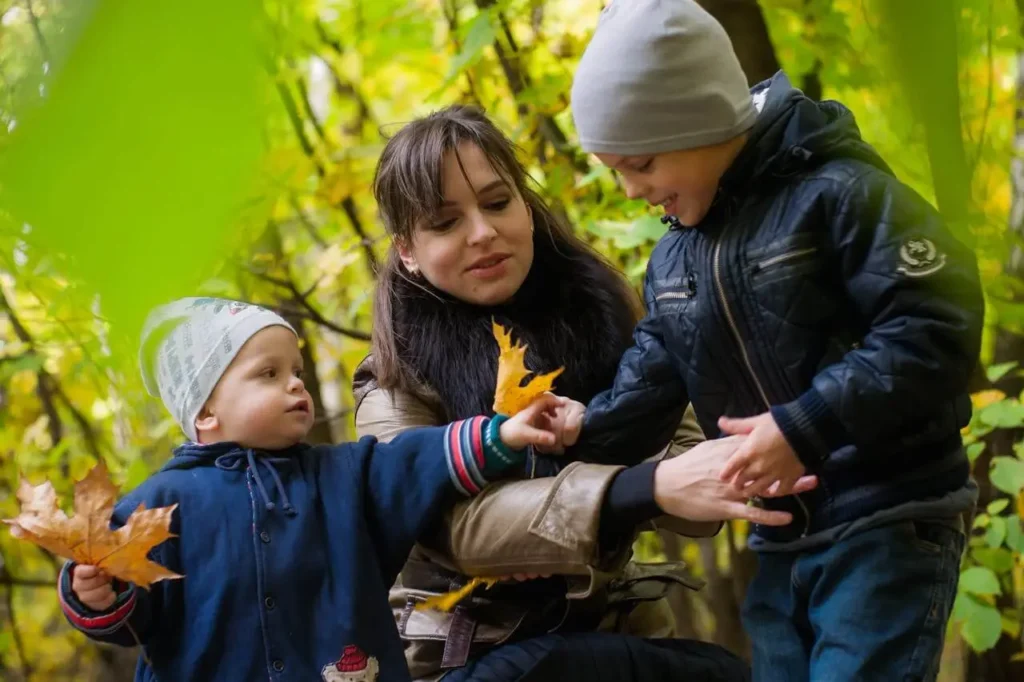
What is nature-based learning?
Nature-based learning is an educational approach that combines learning with direct experiences in nature. It uses the natural environment as a learning space to convey knowledge in a practical and lasting way. Traditional subjects are linked with experiences from the natural world—whether through observing plants and animals, experimenting with natural materials, or discovering physical principles outdoors.
However, nature-based learning is much more than just outdoor lessons. It’s about holistic learning that engages all the senses. Instead of simply reading about a topic or solving a theoretical task, learners actively experience the material. This might mean that children explore math by counting leaves or measuring the height of trees, or that adults gain a better understanding of complex concepts through hands-on activities like gardening or nature observation.
Definition and Foundations
Nature-based learning is founded on the idea that nature is not merely a backdrop, but actively involved in the learning process. It is a form of experiential learning in which people gain knowledge through direct interaction with their environment.
The roots of this learning approach go back a long way. Many Indigenous cultures have always used nature as a primary source of learning. In modern education, the concept has been rediscovered in recent decades and developed in various forms—such as forest kindergartens, outdoor classrooms, or nature education programs for adults.
Core principles of nature-based learning include:
- Learning through direct experience – Knowledge is not just taught, but experienced.
- Holistic development – In addition to cognitive learning, motor, emotional, and social skills are nurtured.
- Sensory-based learning – Sight, hearing, touch, smell, and even taste all play a role.
- Free exploration and self-directed learning – Curiosity is central; learners have a say in what and how they learn.
- Connection to nature – Learning is combined with environmental awareness and education for sustainability.
Scientific Insights on Learning in Nature
The positive effects of learning in nature are well documented. Neuroscientists, psychologists, and educators have shown in numerous studies that experiences in nature enhance learning.
Cognitive Benefits
Studies have shown that both children and adults experience significantly improved concentration when they spend time in nature regularly. Researchers at the University of Michigan found that just 20 minutes in a natural environment can boost working memory by up to 20 percent.
Another advantage is improved problem-solving skills. In nature, individuals must face unexpected challenges—such as crossing a stream, building a shelter, or identifying an animal. These kinds of experiences encourage critical thinking and creative approaches to problem-solving.
Emotional and Social Benefits
Nature has a calming effect on the nervous system. Studies show that spending time in green environments reduces stress hormones, lowers anxiety, and strengthens emotional resilience.
For children in particular, learning in nature can reduce behavioral issues and improve social skills. Through shared exploration and experimentation, abilities such as teamwork, communication, and empathy are fostered.
Differences Between Nature-Based and Traditional Learning
When comparing learning in nature with traditional classroom learning, several key differences become apparent:
| Aspect | Nature-Based Learning | Traditional Learning |
|---|---|---|
| Learning Environment | Outdoors in nature, diverse surroundings | Indoors in a classroom or at a desk |
| Methodology | Experiential, playful, exploratory | Theoretical, teacher-led, lecture-based |
| Use of Senses | All senses are engaged | Focus on seeing and hearing |
| Movement | Active learning through walking, climbing, exploring | Mostly seated at a desk |
| Cognitive Benefits | Improved focus and creativity | Often routine tasks without practical application |
| Social Interaction | Cooperative, problem-solving in groups | Mostly individual or with clear instructions |
An Example:
Imagine you’re supposed to learn about the water cycle. In a traditional classroom setting, you’d likely look at a diagram in a textbook or see an explanation on a PowerPoint slide. In a nature-based learning setting, you might visit a nearby stream, observe the flowing water, notice evaporation in the sunlight, and understand how rain affects the ecosystem.
Through this direct interaction with nature, knowledge doesn’t remain abstract—it becomes a lived experience. And that is precisely the secret of nature-based learning.
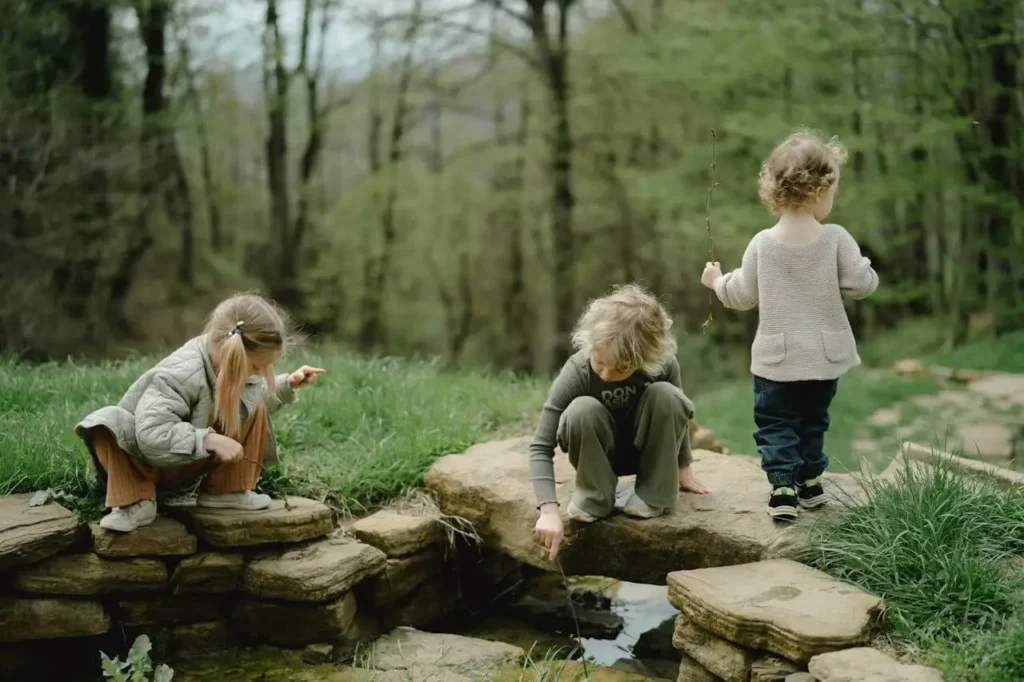
Benefits of Nature-Based Learning
Learning in nature offers a wide range of benefits—from increased concentration and creativity to the improvement of emotional and social skills. While traditional learning often relies on structured lessons with books, blackboards, and digital media, nature-based learning enables direct interaction with the environment. As a result, knowledge is not only absorbed theoretically but internalized through experience and active participation.
Below are the key benefits of nature-based learning described in detail.
Enhancing Cognitive Skills
Learning in nature has been proven to strengthen memory, concentration, and problem-solving abilities. Studies show that people retain information better when they experience it in a natural environment compared to when they absorb it passively.
Improved Focus and Attention
Nature offers a low-stimulation environment in which the brain can naturally unwind. Unlike noisy classrooms or digital screens, nature doesn’t demand focused attention but instead allows for gentle, unconscious awareness. This effect is known as the Attention Restoration Theory (ART), which suggests that natural environments reduce mental fatigue and enhance concentration.
An example: Children who learn in nature are demonstrably better at focusing on tasks, as their cognitive fatigue is balanced out by the natural rhythm of the environment.
Boosting Problem-Solving Skills and Critical Thinking
Nature offers no standard solutions—learners must figure out for themselves how to handle challenges. For instance, climbing a tree or crossing a small stream without a bridge may require creative strategies.
The ability to respond flexibly in unexpected situations strengthens logical thinking, creativity, and adaptability—skills that are essential in an ever-changing world.
Positive Effects on Mental Health
Learning in nature has a direct impact on mental well-being. While modern life is often shaped by stress, screen time, and social pressure, nature offers a counterbalance that helps develop inner calm and resilience.
Reduction of Stress and Anxiety
Studies show that spending time in nature lowers cortisol levels (a stress hormone) and activates the parasympathetic nervous system—the part responsible for relaxation. This leads to:
- Less stress and overwhelm
- Improved emotional regulation
- Deeper sleep and better overall well-being
Children who regularly play and learn outdoors show fewer signs of anxiety disorders and hyperactivity. Nature can also help adults recover from the pressures of a fast-paced lifestyle.
Increased Resilience and Mental Strength
Nature can be challenging: cold, rain, rough terrain—all of these require a certain degree of adaptability. Those who engage in nature-based learning learn to handle unexpected challenges, which boosts self-confidence and mental resilience.
Example: A child who learns to build a shelter from branches not only develops practical skills but also gains confidence and perseverance.
Strengthening Social Skills
Nature-based learning often takes place in groups—whether in forest kindergartens, outdoor projects, or shared learning activities. These settings provide numerous opportunities for collaboration, which helps foster social competencies.
Cooperative Learning Processes and Teamwork
In nature, many tasks can only be accomplished together, such as:
- Building a treehouse
- Finding a water source
- Observing animals and reading tracks
These cooperative tasks teach the importance of communication, teamwork, and mutual support. Unlike traditional learning, which often focuses on individual performance, nature-based learning emphasizes shared success.
Development of Empathy and a Sense of Responsibility
Through direct contact with nature, learners develop a stronger connection to the environment and a greater sense of responsibility toward both nature and their fellow human beings.
Children who experience nature-based learning, for example, gain a better understanding of why sustainability matters and develop an environmentally conscious mindset from an early age.
Boosting Creativity and Intrinsic Motivation
Nature is an endless source of inspiration. Without the constant availability of ready-made toys or digital devices, both children and adults must use their own imagination to engage with their surroundings.
How Nature Stimulates Creative Thinking
- A stick can become a fishing rod, a sword, or a walking cane.
- Leaves can turn into art projects or counting tools for math.
- Water, soil, and stones invite hands-on experimentation.
Without fixed rules or structured play, learners are free to use their imagination and think creatively—an increasingly valuable skill in today’s working world.
Self-Directed Learning Through Curiosity and Discovery
Learning in nature is often self-guided. Instead of following a teacher, learners explore topics that genuinely interest them. This leads to strong intrinsic motivation—they learn not because they have to, but because they want to.
Example: A child who is fascinated by insects will naturally be motivated to learn more about habitats, reproduction, and biodiversity. This kind of knowledge tends to stay in memory far longer than facts learned by rote.
Summary of Benefits
| Benefit | Positive Effects |
|---|---|
| Improved Concentration | Increased attention span, enhanced working memory |
| Greater Problem-Solving Skills | Encourages critical thinking and creativity |
| Less Stress | Lower cortisol levels, increased well-being |
| Social Skills | Strengthens teamwork, communication, and empathy |
| Creativity Boost | Supports free thinking and independent exploration |
| Environmental Awareness | Grows a sense of responsibility for nature and sustainability |
Why You Should Integrate Nature-Based Learning Into Your Daily Life
The benefits of learning in nature are compelling—from cognitive improvements and stress reduction to the development of social and creative skills. And the best part? It’s easy to get started!
You don’t have to live in the woods or attend a special school to enjoy these advantages. Even small changes like regular walks, nature projects, or studying in the park can have a big impact.
So why not start today? Step outside, explore nature, and experience how it transforms your learning! 🌿
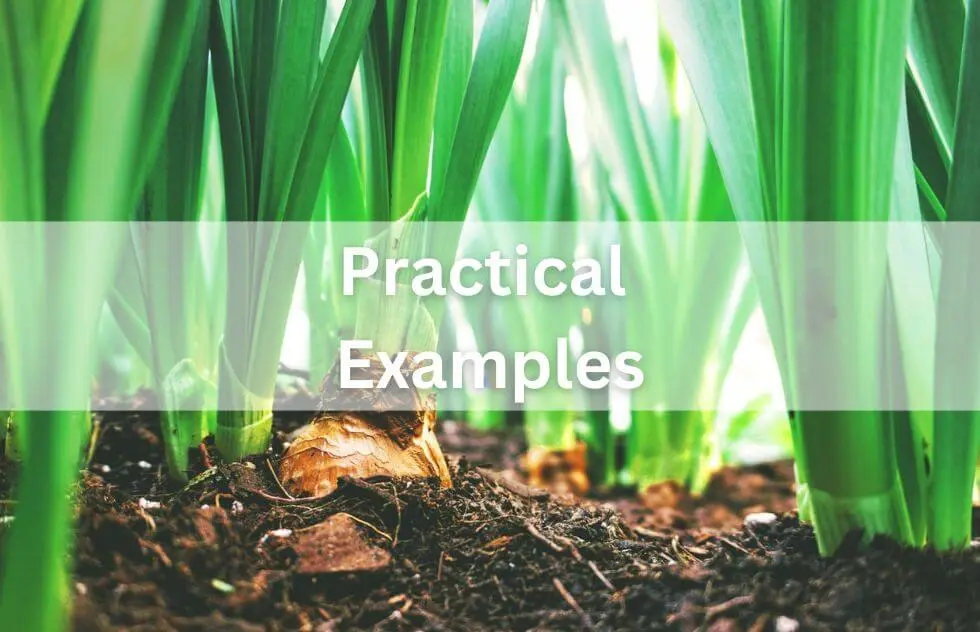
Practical Examples: Nature-Based Learning in Action
Nature-based learning is applied around the world in various forms—from forest kindergartens and outdoor classrooms to adventure schools. These methods allow both children and adults to learn in a natural and playful way.
How learning in nature works and the positive effects it can have are illustrated by some inspiring real-life examples.
Forest Kindergartens and Forest Schools
What Are Forest Kindergartens?
Forest kindergartens are one of the most well-known forms of nature-based learning. Children between the ages of three and six spend their entire kindergarten day outdoors—no matter the weather. There is no fixed building, only a shelter for extreme weather conditions.
These kindergartens follow the principle that children learn holistically through play and exploration in nature. They develop motor skills by climbing and balancing, discover physical principles by building with sticks and stones, and learn about ecological systems through direct observation of nature.
Success Stories from Different Countries
- Germany: With over 2,000 forest kindergartens established since the 1990s, studies show that children from these programs are often more creative and have better fine motor skills than peers from traditional settings.
- Scandinavia: Forest kindergartens are especially widespread in Denmark and Sweden, where outdoor play and nature experiences are firmly embedded in early childhood education.
- Japan: The Fuji Kindergarten in Japan combines the principles of a forest kindergarten with open architecture, ensuring that children always have direct access to nature.
Forest Schools for Older Children
In addition to forest kindergartens, there are also forest schools that extend the concept to primary and secondary education. These schools integrate outdoor learning with regular curricula to teach subjects like science, math, and languages in a hands-on, engaging way.
One example is the Forest School movement in the United Kingdom, which offers children regular outdoor experiences to deepen their understanding of nature and the environment.
Outdoor Classrooms and Green Learning Spaces
What Are Outdoor Classrooms?
Outdoor classrooms are designated learning areas in nature, often equipped with wooden benches, chalkboards, or even solar lighting. Regular lessons are moved outside to give students a direct connection to the natural world.
Examples of Outdoor Classrooms in Schools
- USA: Many American schools now have “Green Schools” that hold lessons in gardens or specially designed outdoor areas. Studies show that students in these environments are more focused and display fewer behavioral issues.
- Germany: Some schools offer biology classes directly in school gardens, where students grow plants themselves and experience ecological processes up close.
- Switzerland: In Zurich, certain schools teach science and math outdoors, linking lessons to real-life experiences—for example, through water experiments or soil sample analysis.
The Impact of Green Learning Spaces on Student Performance
Studies show that children who regularly learn outdoors achieve better grades in science, as they grasp and internalize the content more practically. Learning in nature also boosts motivation, as students feel more comfortable and experience less stress.
Nature as Teacher: Learning Through Adventure and Exploration
In addition to structured programs, there are also informal forms of nature-based learning that focus on exploration, adventure, and playful discovery.
Learning Through Movement and Exploration
Children and adults often learn best when they can move freely through their surroundings and explore nature. This kind of learning can be encouraged through various activities:
- Climbing and balancing: Improves motor skills, balance, and self-confidence
- Tracking and animal observation: Sparks curiosity and sharpens the senses
- Navigating with map and compass: Trains logical thinking and spatial awareness
This type of learning is especially effective because it strengthens intrinsic motivation. When learners are driven by curiosity, they retain information more deeply than in purely theoretical lessons.
Outdoor Learning Programs for Adults
It’s not just children who benefit from learning in nature—there are plenty of opportunities for adults to gain new skills through outdoor experiences:
- Wilderness schools: Teach adults how to survive in nature, make fire, and identify edible plants
- Mindfulness in nature: Programs like forest bathing (Shinrin-Yoku) help reduce stress and improve focus
- Nature-based teambuilding: Many companies now use outdoor training to enhance teamwork, communication, and problem-solving skills
Projects and Initiatives Supporting Exploratory Learning
- The Children & Nature Network (USA): Advocates globally for more nature experiences in childhood
- The Green School (Bali): A school fully integrated into nature, embedding sustainability into its curriculum
- Friluftsliv (Scandinavia): A concept that embraces outdoor living as a natural part of everyday life
Why Real-Life Examples Show That Nature-Based Learning Works
These real-life examples clearly demonstrate that learning in nature is a versatile and effective method that can be applied across different age groups and contexts. Whether in a forest kindergarten, outdoor classroom, or adventure camp—nature offers countless opportunities for playful and lasting learning.
Trying nature-based learning doesn’t require long journeys or special facilities. Even small changes in your daily routine, like learning in a park or participating in nature projects, can make a big difference.
So why not start today? Nature is a boundless classroom—and best of all, it’s open to everyone! 🌿
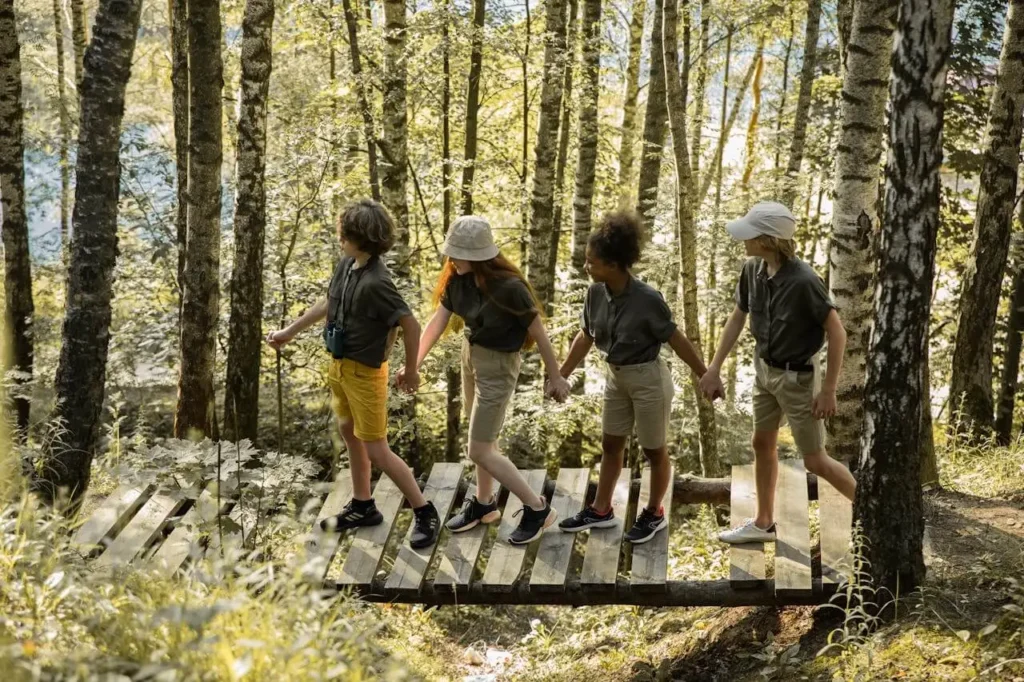
Integrating Nature-Based Learning into Everyday Life
Learning in nature isn’t just a concept for specialized educational institutions or outdoor programs—it can also be easily incorporated into daily life. Whether you’re a parent, teacher, or simply a nature enthusiast looking for ways to support learning through nature, there are many simple and effective ways to do so.
In this section, you’ll learn how to apply nature-based learning at home, in school, or in your professional life—and what challenges you might encounter along the way.
Tips for Parents: Encouraging Nature-Based Learning at Home
Parents play a crucial role in integrating nature-based learning into their children’s daily lives. Even without a forest or large garden nearby, there are many fun and simple ways to help kids connect with nature.
Make Nature Walks Intentional
Instead of just going for a walk, turn it into an adventure:
- Themed Walks: Search for specific colors in nature, examine different types of leaves, or observe birds together.
- Create Barefoot Paths: Let your child feel different textures (grass, sand, stones, mud)—this strengthens sensory perception and awareness.
- Keep a Nature Journal: Draw or write down what your child discovers outside to train memory and observation skills.
Outdoor Science Experiments
Kids love to experiment—and nature provides the perfect setting. A few ideas:
- Water Experiments: How long does it take for a puddle to evaporate? Which objects float and which sink?
- Soil Exploration: What lives in the dirt? How does the soil change after rain?
- Weather Observation: What types of clouds are there, and how do they relate to the weather?
Start a Gardening Project
Whether on a balcony, in a community garden, or the backyard—growing and caring for plants is one of the best ways to teach children about nature’s cycles. Great options include:
- Fast-growing plants (cress, radishes, sunflowers)
- Pollinator-friendly flowers (lavender, marigolds, wildflowers)
- Quick-yield vegetables (tomatoes, lettuce, beans)
Through gardening, children directly experience how food grows and learn to take responsibility.
Use Natural Materials for Creativity
Crafting with natural materials is not only sustainable, but also a great way to support fine motor skills and creativity. Some ideas:
- Paint stones
- Press leaves and flowers to create art
- Carve wooden figures from small branches
Nature-Based Learning for Adults
It’s not just children who benefit from learning in nature—adults also have many opportunities to expand their knowledge and skills through nature experiences.
Mindfulness and Stress Management Through Nature
Numerous studies show that spending time in nature regularly reduces stress, improves concentration, and boosts creativity. Here are some simple practices you can integrate into your daily routine:
- Forest Bathing (Shinrin-Yoku): Mindful, slow walking in the forest to activate the senses and relieve stress
- Breathing Exercises Outdoors: Deep breathing in a natural setting helps calm the nervous system
- Meditation in Green Spaces: Focusing on the sounds and smells of nature helps develop mindfulness
Learning Through Outdoor Skills and Survival Techniques
Nature-based learning can also teach practical skills:
- Starting a fire without a lighter
- Identifying edible wild plants
- Navigating with a map and compass
These skills not only sharpen the senses but also build confidence in one’s own problem-solving abilities.
Professional Development Through Nature-Based Learning
Nature-based learning is increasingly being used in professional contexts as well.
- Outdoor team-building events improve communication and collaboration within teams
- Leadership trainings in nature teach key soft skills like decision-making and stress management
Example: In Scandinavia, many companies hold meetings outdoors to boost creativity and productivity among employees.
Challenges and Solutions for Implementation
While nature-based learning offers many benefits, there are also challenges that need to be addressed. Here are the most common obstacles—and how you can overcome them.
Challenge 1: No Access to Nature?
Many people live in cities or don’t have easy access to forests or meadows. Possible solutions:
- Use parks, community gardens, or botanical gardens
- Green up balconies or courtyards
- Participate in urban gardening projects or conservation initiatives
Challenge 2: Lack of Time in Daily Life
Busy daily routines often leave little time for eÜberschrift 4xtended stays in nature. Solutions:
- Use your lunch break for a short walk
- Spend 10 minutes barefoot on the grass in the morning
- Plan weekend trips into nature
Challenge 3: Weather Dependency
Many people avoid outdoor activities when the weather is bad. But remember: “There’s no such thing as bad weather, only bad clothing!” Solutions:
- Make rain jackets and rubber boots part of your standard gear
- Use covered outdoor areas
- Plan creative indoor nature projects for rainy days (e.g., watch nature documentaries, start a planting project)
Challenge 4: Lack of Knowledge About Nature Education
Not everyone feels confident teaching nature-related content. Possible solutions:
- Use books and online courses on nature-based learning
- Join workshops or guided nature walks
- Simply let children explore—often, it’s enough to be curious together!
Why Integrating Nature-Based Learning into Everyday Life Is Worth It
Nature-based learning doesn’t require a lot of effort—even small adjustments can have a big impact. Whether you’re exploring a park with your children, starting your own nature projects, or continuing your personal learning journey through outdoor experiences—nature is an inspiring teacher that’s open to everyone.
So why not start right now? Step outside, explore, experience, and learn—it’s worth it! 🌿😊
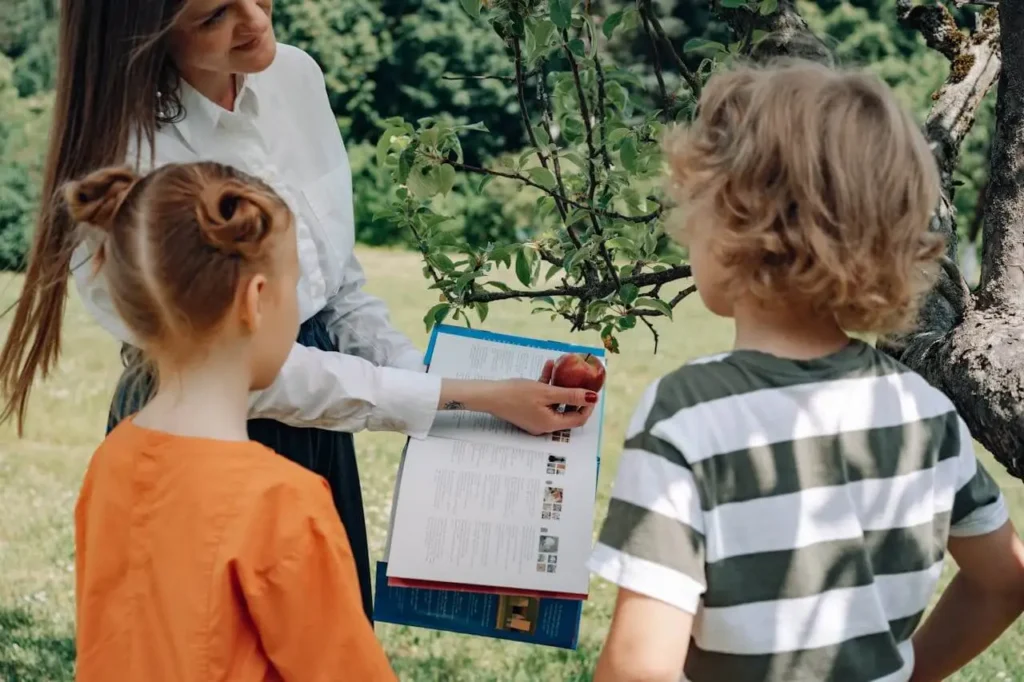
The Future of Nature-Based Learning
Nature-based learning is currently experiencing a renaissance. Once seen as an alternative or supplementary method, it is increasingly being recognized as an essential part of modern education systems. In light of the challenges of the digital age, the growing stress levels among students and adults, and the urgent need for sustainable development, learning in nature is becoming more relevant than ever.
In this section, we take a look at the developments, trends, and long-term impacts of nature-based learning on education, society, and the environment.
Educational Policy Developments and Trends
Growing Recognition by Educational Institutions
Around the world, more and more schools and universities are recognizing the benefits of learning in nature and are integrating it into their curricula. Various models exist, ranging from occasional outdoor sessions to fully nature-based schools.
- Outdoor Classrooms and “Green Schools”: Many schools are intentionally creating outdoor learning spaces to provide students with nature-based environments. In some countries like Canada, Sweden, and Germany, schools already have mandatory “nature days.”
- Integration into Universities: Degree programs in education, environmental science, and sustainable development are increasingly emphasizing hands-on, nature-oriented learning methods.
Digitalization Meets Nature-Based Learning: Hybrid Models
Technology and nature-based learning are not mutually exclusive—they can complement each other effectively. Hybrid learning models combine digital tools with real-world nature experiences:
- Augmented Reality (AR) in Nature: Apps that help identify plants or explain animal behavior in real time.
- Virtual Field Trips: With VR technology, students can explore distant natural areas like the Amazon rainforest or the deep sea.
- Interactive Nature Apps: Platforms that guide outdoor science experiments or connect environmental education projects.
This blend of technology and nature could fundamentally reshape the future of learning, making nature-based experiences more accessible—even in urban areas.
Mandatory Nature Experiences in the School Day?
Some education experts are calling for nature-based learning to become a fixed part of school education—not just as an optional activity, but as a mandatory element of the curriculum. In countries like Norway and Denmark, there are already models where students are required to spend time outdoors every day.
A Possible Vision for the Future:
Schools that conduct 50% of their lessons outdoors, with integrated outdoor laboratories and nature projects as standard elements of the curriculum.
Long-Term Impacts on Society and the Environment
Learning in nature offers not only individual benefits but can also drive social and ecological change.
Greater Environmental Awareness Through Nature Learning
Direct contact with nature fosters a deeper understanding of ecological systems. Studies show that people who spent a lot of time in nature as children are more likely to act in environmentally responsible ways later in life.
Potential impacts include:
- More people advocating for climate protection
- Sustainable consumption becoming more normalized
- Cities being designed with more green spaces to preserve nature as a learning environment
Stress Reduction and Improved Well-Being in Society
Since learning in nature has been proven to reduce stress, wider integration could help lower rates of burnout and mental illness. This could lead to long-term relief for healthcare systems, especially in densely populated urban areas.
Example: In Japan, there are already programs where “forest bathing” is prescribed as therapy—a concept that is becoming increasingly popular in Western countries as well.
New Careers and Economic Sectors
As nature-based learning gains importance, new professions and industries are emerging:
- Nature educators and outdoor teachers are in higher demand
- Companies are specializing in sustainable outdoor education programs
- Cities and communities are investing more in nature-based recreational and learning spaces
This demonstrates that learning in nature holds not only educational, but also economic potential for the future.
Vision for the Future: What Could Nature-Based Learning Look Like in 20 Years?
Imagine nature-based learning continues to grow and becomes an integral part of education—how might our approach to learning change? Here’s one possible scenario:
- Schools Without Walls: Students spend at least half of their learning time outdoors. Lessons in parks, forests, or specially designed open-air classrooms become standard.
- Technology as a Bridge to Nature: Instead of distancing children from nature, digital tools help convey knowledge in interactive and playful ways.
- Sustainability as a Core Skill: Children learn from an early age how to conserve resources, understand natural cycles, and develop eco-friendly solutions.
- Greener Cities as Learning Spaces: Urban planners intentionally integrate green areas that serve not only for recreation but also as educational environments.
- Lifelong Learning in Nature: Adults also benefit from regular nature-based training—whether in vocational education, coaching, or personal development.
Why Nature-Based Learning Is the Future
Learning in nature offers more than just short-term benefits for individuals—it can have lasting positive effects on education, health, and the environment. In a world increasingly shaped by digitalization and urbanization, nature as a learning space can offer a vital counterbalance.
By actively promoting this approach, future generations could not only learn more effectively but also live more consciously and healthily—ultimately making more sustainable decisions for our planet.
The future of learning might not lie solely in the digital world—but also in the forest, on the meadow, and under the open sky. 🌿🌎
Why You Should Give Nature-Based Learning a Try
Learning in nature is more than just an alternative to traditional education—it’s an effective, sustainable, and research-backed approach that combines learning with movement, creativity, and social interaction. Whether for children or adults, nature offers countless opportunities to acquire knowledge in a deeper and more lasting way.
So why not give it a try? Step outside, explore nature, and experience how it transforms your learning!
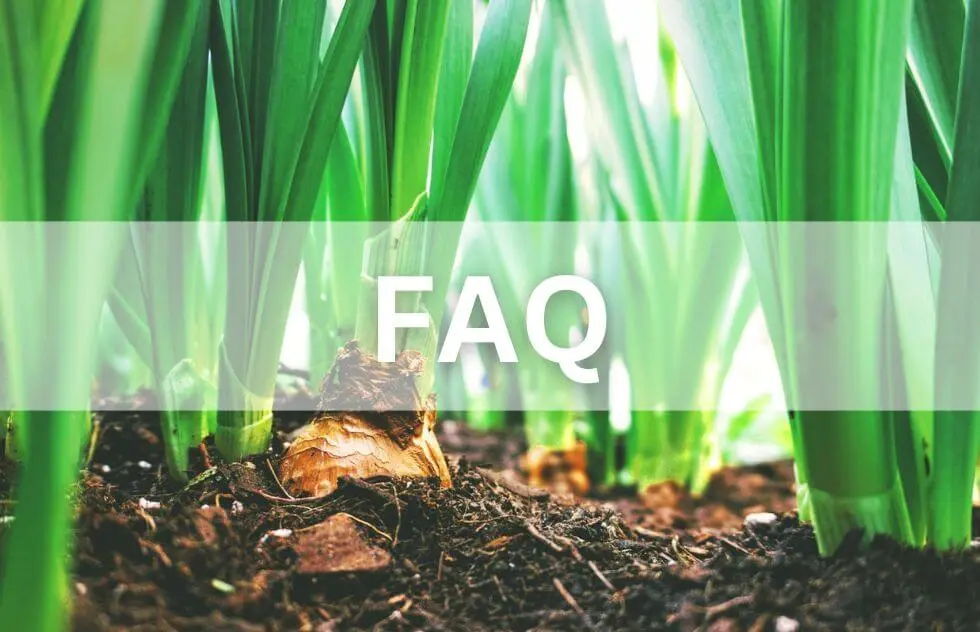
FAQ – Frequently Asked Questions About Nature-Based Learning
Does nature-based learning work in urban areas?
Yes! Even in cities, there are parks, botanical gardens, or green schoolyards that can serve as learning spaces.
Is nature-based learning only suitable for children?
No, adults benefit as well. Outdoor learning can help develop new skills or reduce stress.
Is there scientific evidence supporting its effectiveness?
Yes, numerous studies confirm the positive effects on concentration, creativity, and mental health.
How can I integrate nature-based learning into my daily life?
Even small changes, like a walk with nature observation or a gardening project, can make a big difference.
This post is also available in Deutsch.
